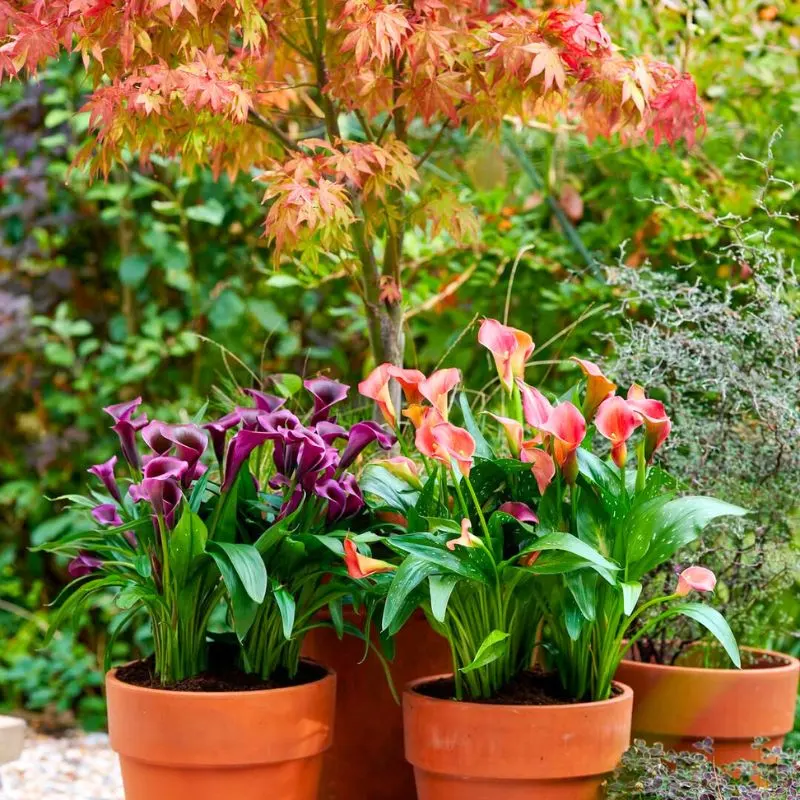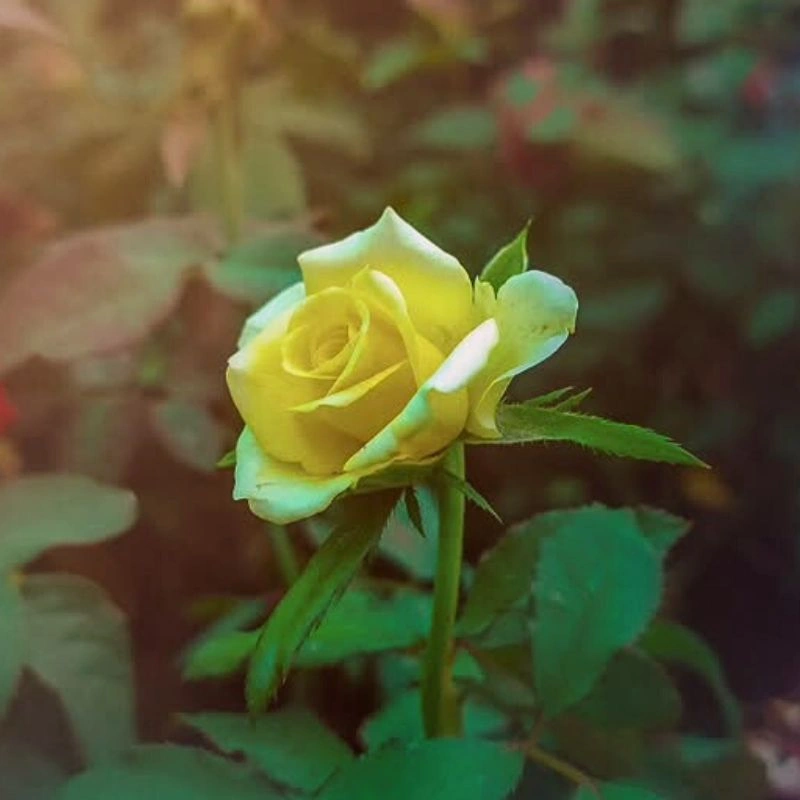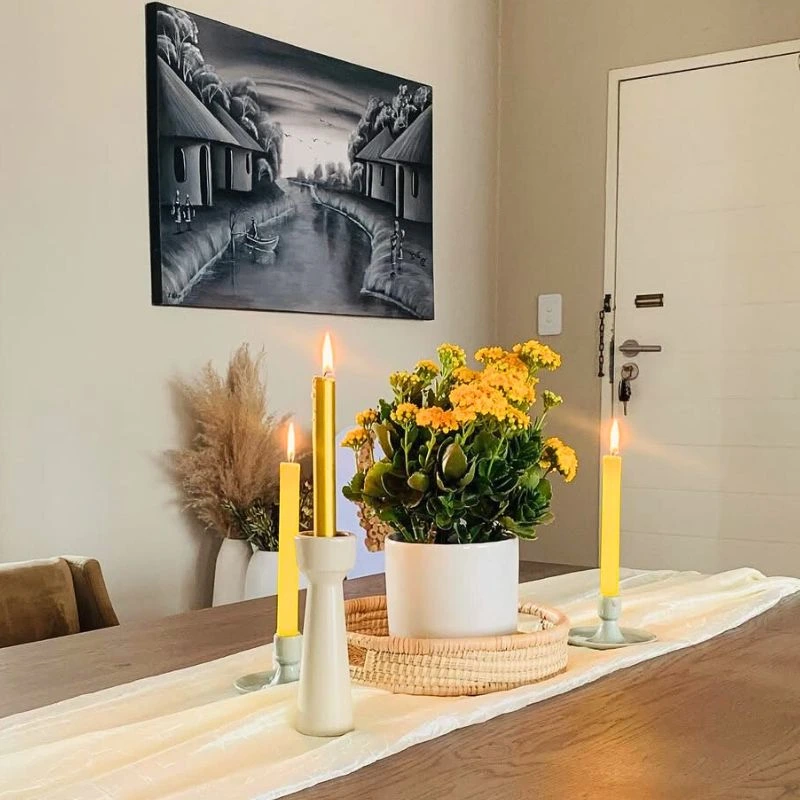Osmanthus Moon is a temporary public art installation by HCCH Studio, created to mark the traditional Chinese 'Mid-Autumn Festival'. The project references the osmanthus flower, an emblematic plant associated with the season, and establishes a dialogue with the action paintings of a folk Zao Hua (stove flower) artist, a practice recognized as an element of intangible cultural heritage.
HCCH Studio Places Osmanthus Motifs Into Translucent Dome
Located on the semicircular lawn of Century Park in Shanghai, the pavilion takes the form of a translucent dome reminiscent of a full moon. Its structural framework integrates stylized osmanthus motifs into a bronze lattice resembling intertwined vines. A lightweight, elastic fabric is stretched across the framework, forming a continuous, illuminated surface. The resulting form explores the intersection of traditional patterning and contemporary construction methods.
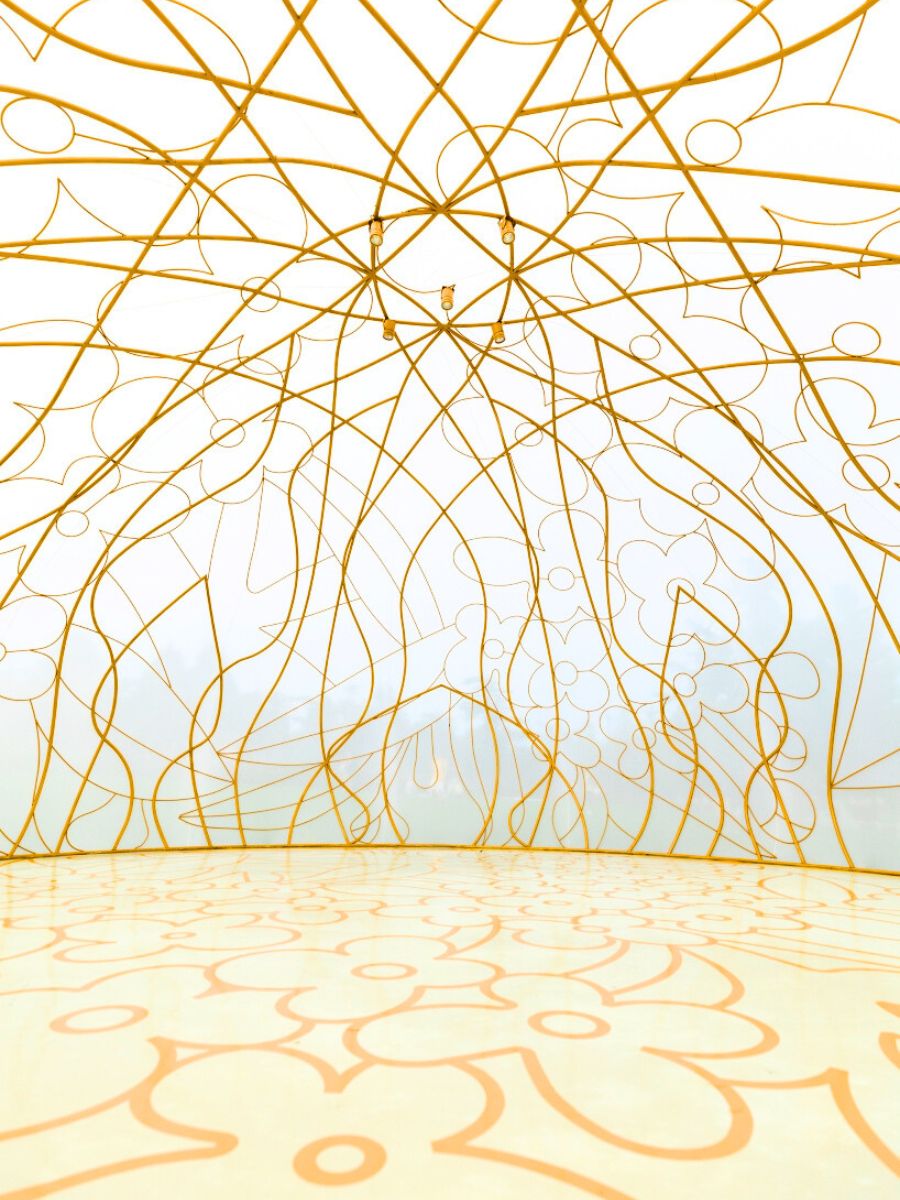
The design references the ornamental language of the Vienna Secession while drawing on the geometric clarity of Buckminster Fuller’s domes. On the ground, the Zao Hua artist’s painted osmanthus patterns correspond to the bronze framework above, establishing a spatial and visual relationship between movement and structure, craftsmanship and fabrication.

Osmanthus Moon Explores Geometry, Illumination, and Heritage
Visitors enter through two irregular openings that lead to an enclosed interior space. During the day, filtered daylight produces a diffused glow across the fabric surface, creating a soft, evenly lit environment. At night, internal illumination transforms the pavilion into a semi-transparent volume defined by shifting shadows and gradients of light. Commissioned to Shanghai-based practice HCCH Studio by the Power Station of Art in Shanghai, Osmanthus Moon was presented as a twelve-day installation, serving as both a seasonal observance and an exploration of the relationship between natural motifs, material technology, and cultural continuity.
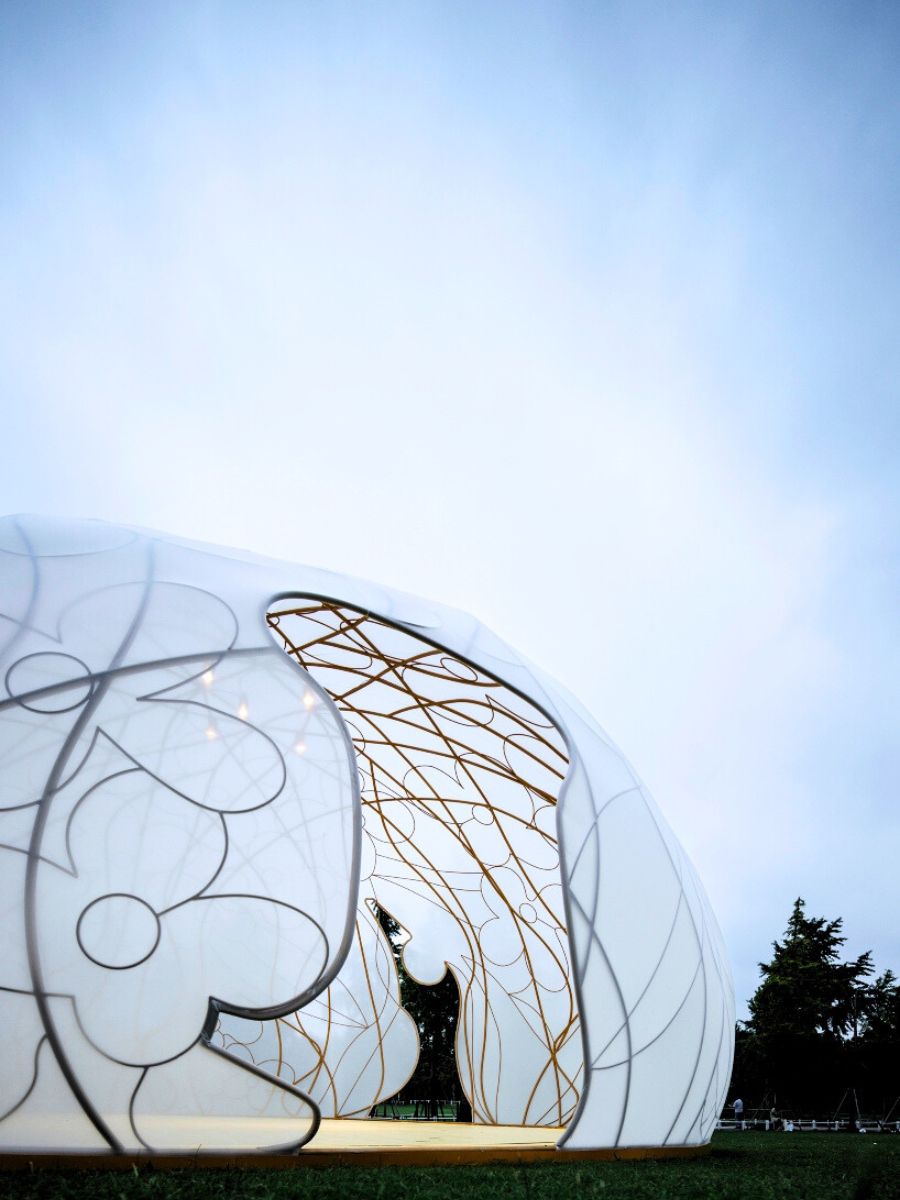
Beyond its visual appeal, Osmanthus Moon operates as a sensory and symbolic environment. The dome becomes a temporary observatory of light and movement—visitors notice how illumination shifts across the bronze lattice, projecting floral silhouettes that change throughout the day. The experience encourages a slow engagement with material and form, where light itself becomes an element of design.
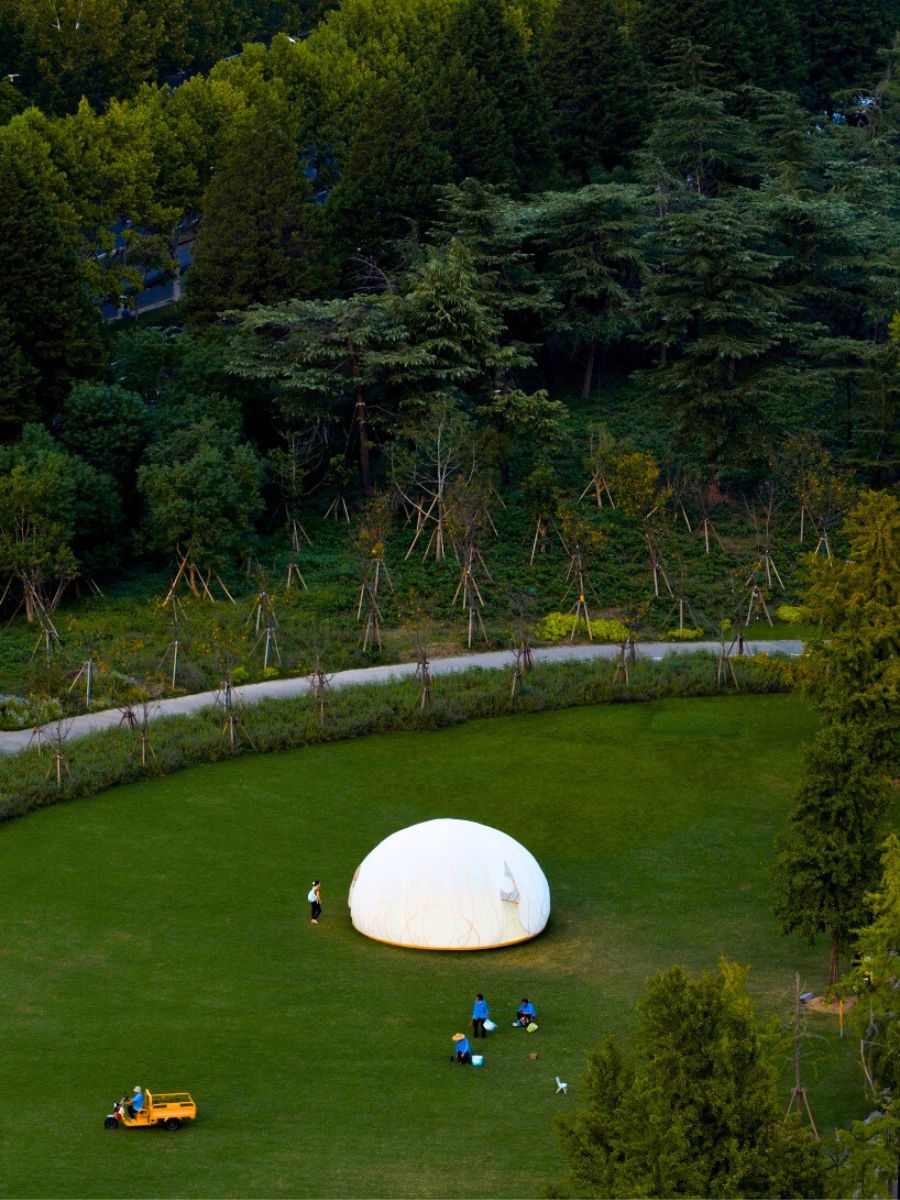
A Mid-Autumn Festival Through Architecture and Light
The studio developed the pavilion as a meeting point between manual skill and fabrication research. The bronze framework was produced through a hybrid process that joined digital modeling with hand-applied finishing, giving the structure both precision and texture. The specially woven fabric membrane filters light in changing densities according to weather and time of day. This sensitivity allows the dome to appear responsive, mirroring the osmanthus tree’s blooming rhythm during the Mid-Autumn Festival.
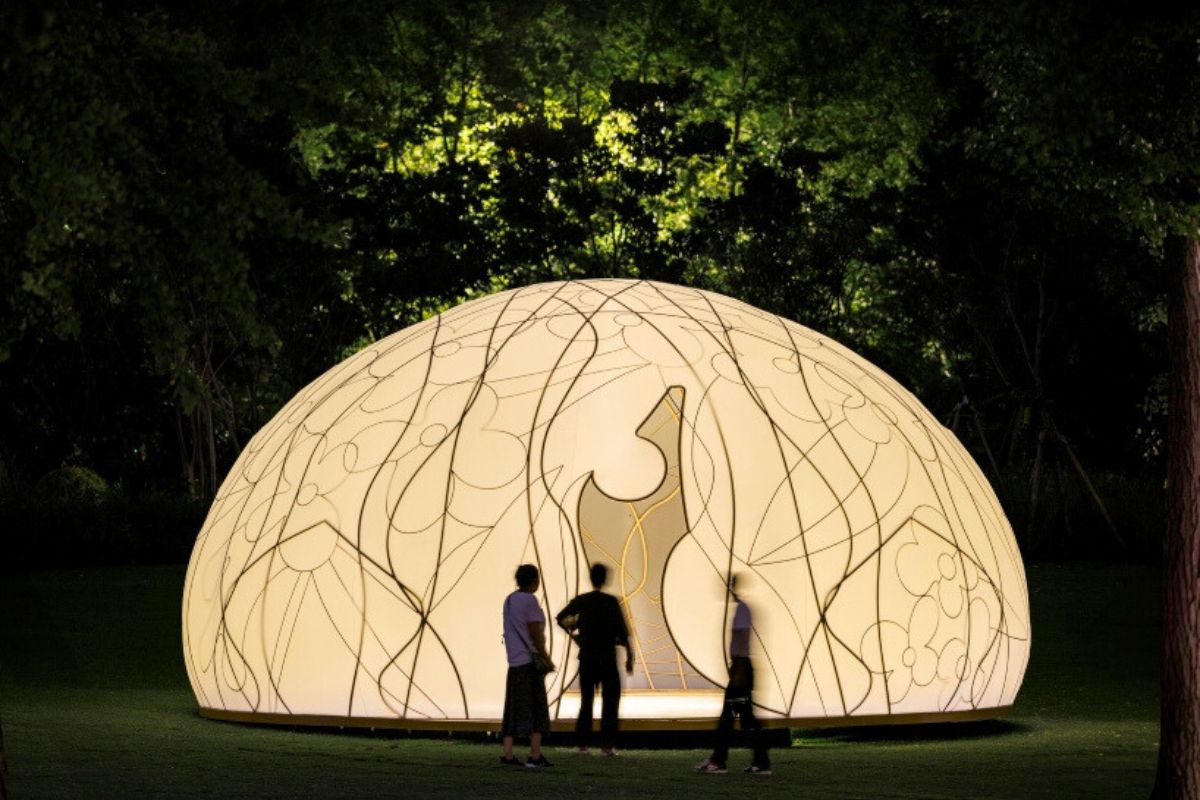
The installation reflects on how temporary architecture can carry cultural meaning without relying on permanence. Instead of proposing a fixed monument, the osmanthus moon symbolizes the fading of light, the brief life of flowers, and the cyclical nature of seasonal rituals. Its circular form invites visitors into a shared space of pause and observation, transforming a public lawn into a setting for quiet gathering and collective reflection.
Photos by Guowei Liu, PSA.



